What Are Tension Structures? How Fabric Structures Are Built
Tension structures (a.k.a. fabric structures or tensile fabric structures) are, simply put, support structures with durable fabric stretched over and between them. But they are more than simple coverings.
These are nothing less than architectural works of art.
Their beauty may be easy to see. But to truly understand what makes them special, you need to know a little about how they’re built.
Read on to learn about the process involved in building tension structures from design and engineering to manufacturing and installation, and to get an idea what to expect as you consider building your own custom fabric structure.
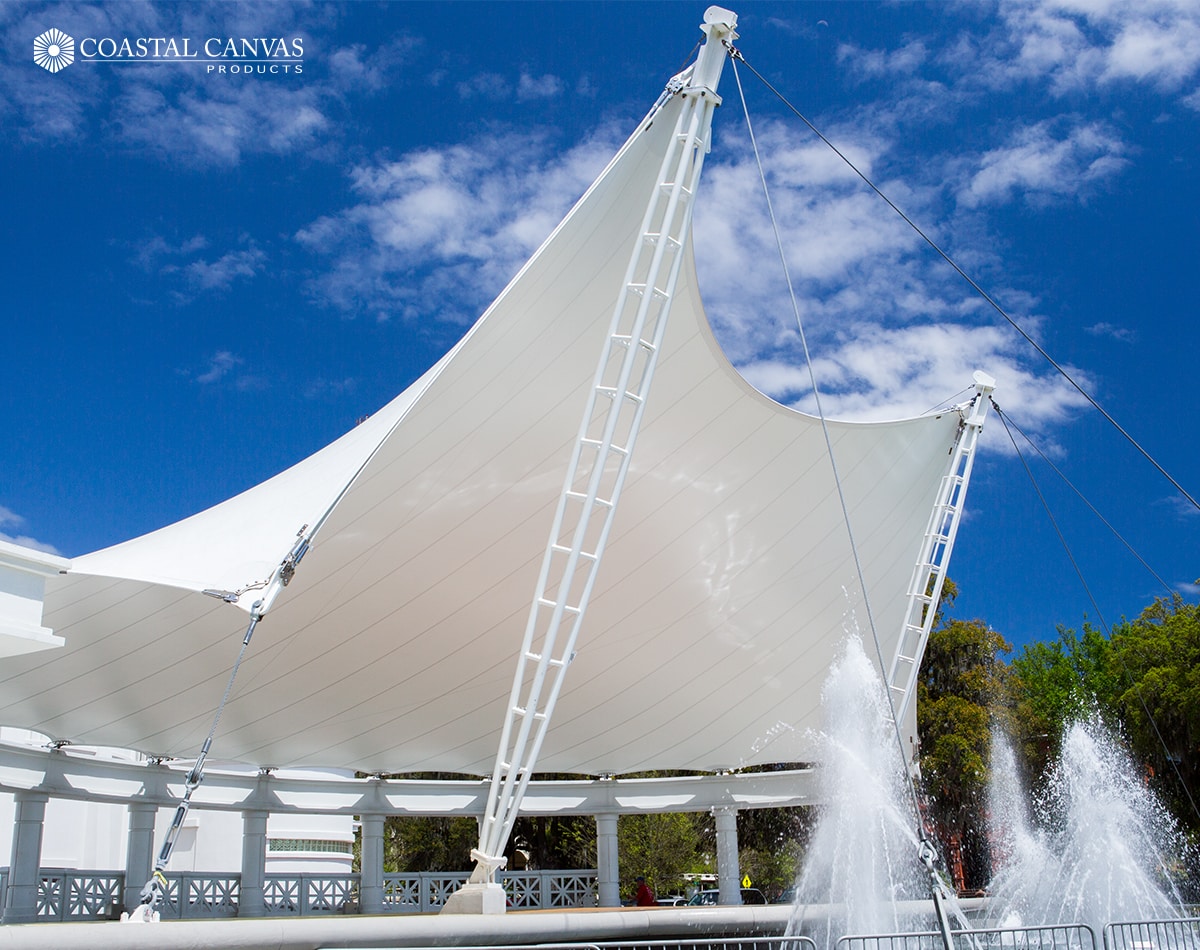
What Tension Structures Are (and Are Not)
First off, it helps to have a firm sense of what you’re really looking for in an exterior structure. Tension structures are:
- Made with durable fabric
- Custom-designed
- Fixed (non-retractable)
It also helps to understand them in contrast to similar products.
More Taut and Customizable Than Awnings
They are similar to canvas awnings in the sense that they are coverings made from fabric, but the shape the fabric takes is far more customizable.
The fabric is also far more taut as it is stretched over and secured by supports. While awning fabric might shift a bit in high wind, tensile fabric does not.
More Like Roofing Than Shade Sails
The high stability of the taut fabric and heavy duty supports are the factors that put tension structures in a different category as shade sails. Shade sails are also made of stretched fabric, but are not as akin to roofing as tension structures are.
One way to think of tension structures is that they are about as close you can get in stability to a metal awning without losing the flexibility of design fabric offers.
It all starts with a design process as exciting as your imagination.
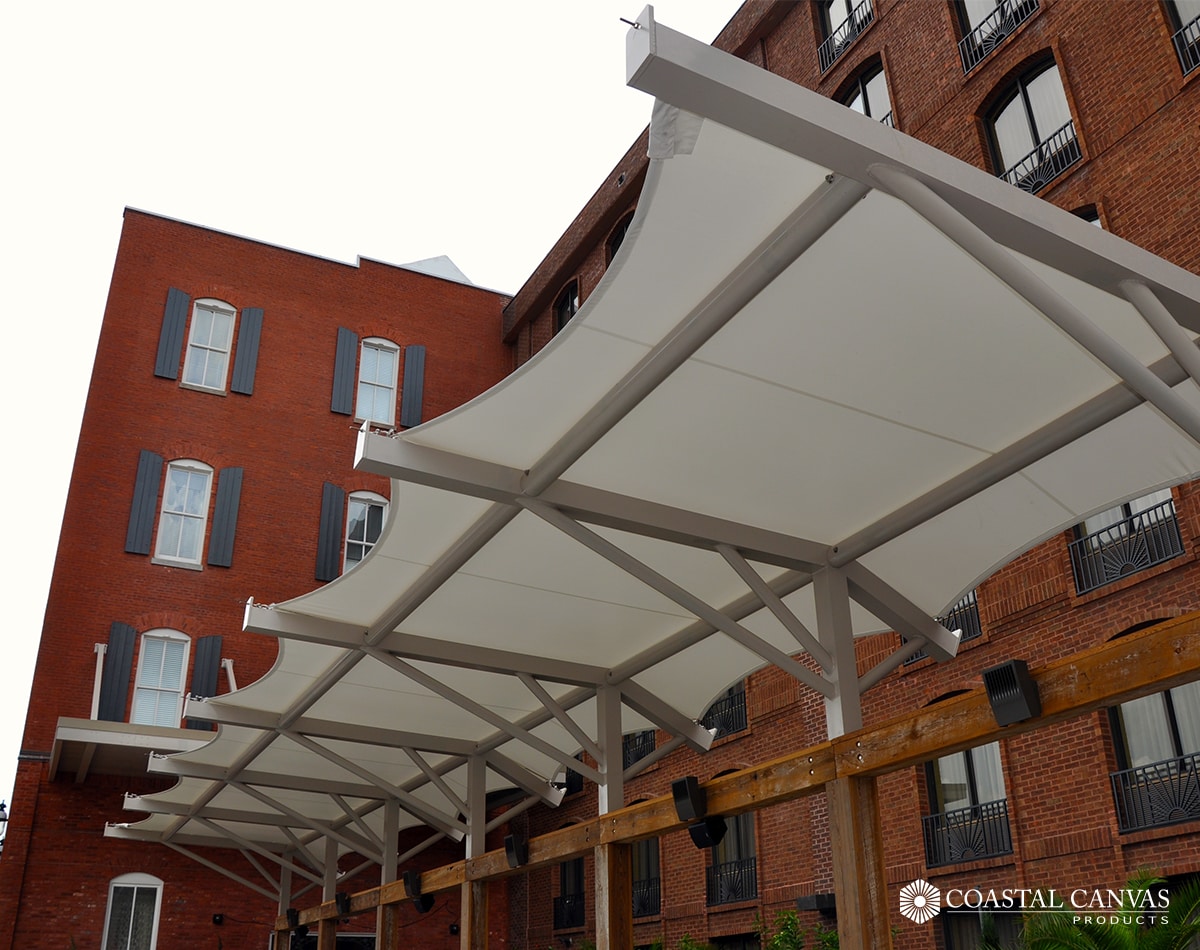
Designing Your Tension Structures
This is a fun stage, almost as exciting as seeing the finished product come to life. It basically comes in two parts: dreaming and adjusting.
Part 1: Dreaming
The wonderful thing about fabric structures is how creative you can be with the design. They don’t follow the same rules that buildings do because, somewhat like a tent, the relatively lightweight fabric can be held up by less support material.
Tension structures can be modest canopies at roof level, or they can soar high into the sky. They can be attached to a main building or stand alone over a communal area.
Their shape can be flat, rounded, dome-shaped, turned upward like a Pringle, made into peaks and valleys. And they come in a wide variety of colors, whether solid, striped, branded or with any number of custom patterns.
The point is, you can dream big with tension structures. And you should!
Part 2: Adjusting
After you’ve dreamed up your ideal design, the next step is to shape it in a way that reflects the reality: this will have to be engineered in the real world.
You will want to work with an experienced tension structure designer or architect who understands this. They can make the next step much smoother by bringing your vision out of the clouds and down to earth (or at least a little closer to it).
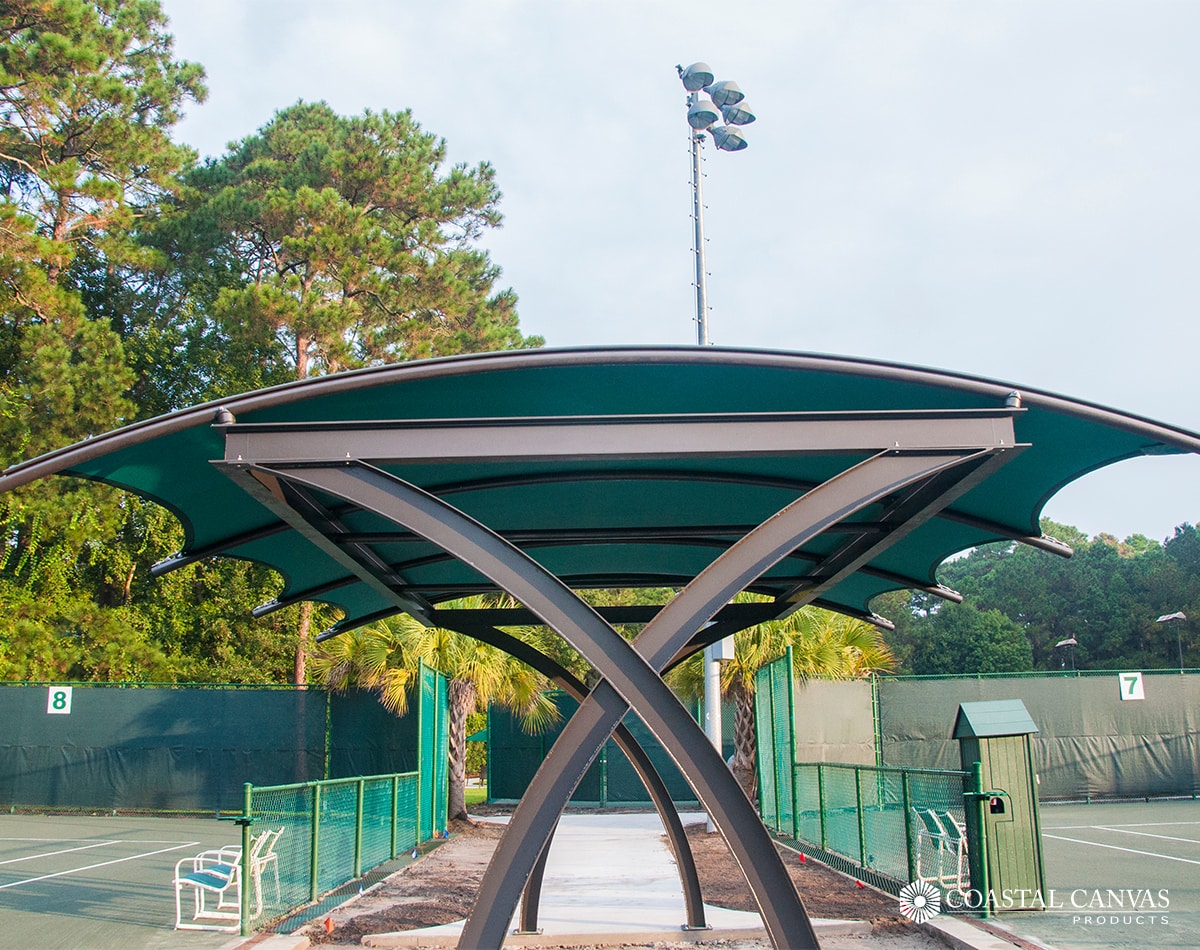
Engineering
Before you can even think about building your tension structures, a certified engineer (or architect who has this certification) will need to review and approve your design.
The primary reason for this is safety, and the secondary reason is to get approval from the local municipal government. It’s not enough to have an engineer tell you the structure appears safe. They also have to put their seal of approval on the project so you can build it legally.
Some of the considerations include:
- Proper materials. Will the planned supports and fabrics be appropriate for this use?
- Optimum sizing. How thick do the steel and/or cables and canvas fabric need to be?
- Load criteria. Can the structure withstand high winds, heavy rain and hail?
- Foundation. Will the structure be sufficiently secured to the ground and/or buildings?
A thorough review of these and other factors usually ensures you can get the necessary permits to proceed with the project.
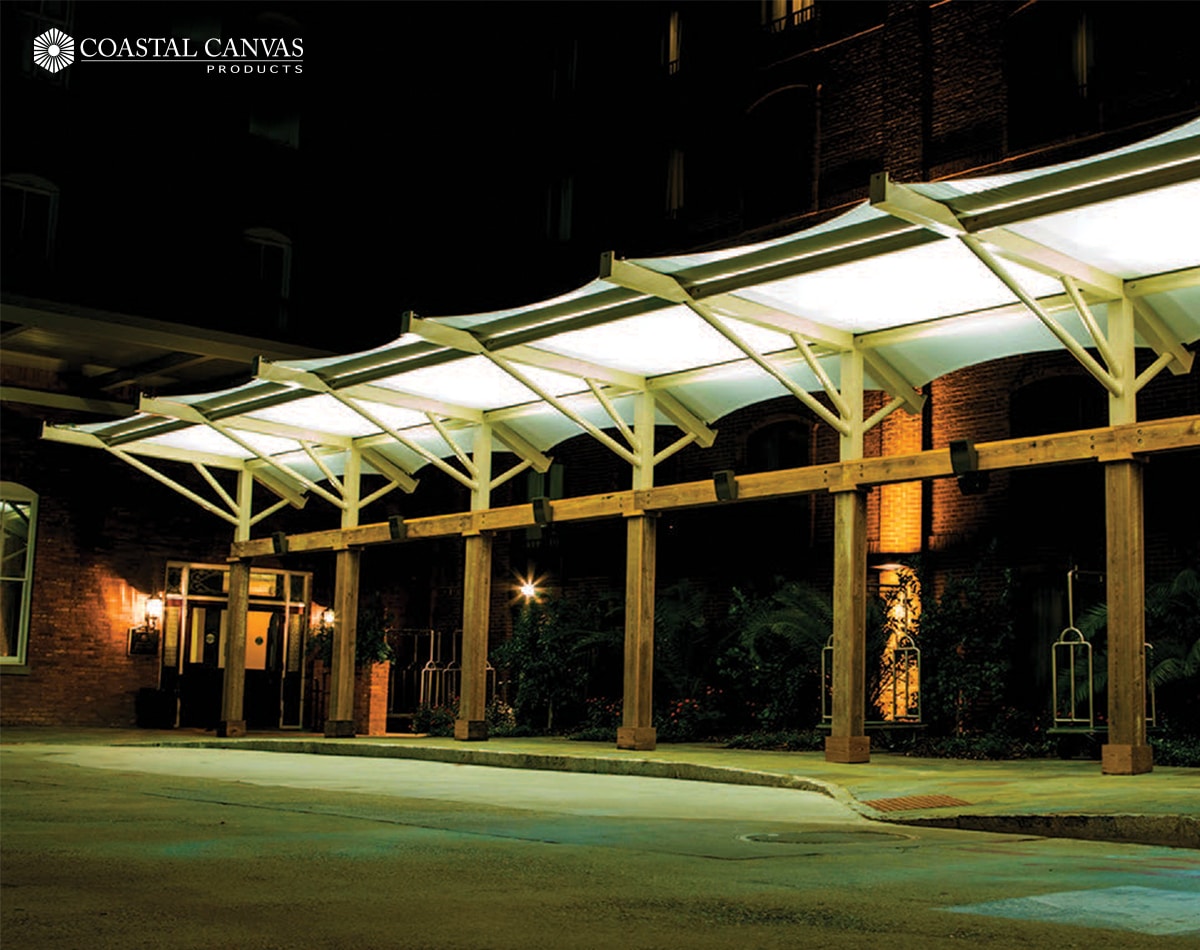
Manufacturing
Once your designs are approved and you have the permits, you can start manufacturing the components of your tension structures.
The designs are translated into shop drawings. These are like schematics for each component of the structure that give specific instructions for a number of processes.
Steel or Aluminum Welding
The type of metal used for the supports depends on the size of the structure, whether it is free-standing or will be secured to an existing structure (a building), and a number of other factors.
Both steel and aluminum may be used. Cables and primary support beams may be made from steel, while secondary support frames may be made from aluminum. Welding is the process of joining these metals into the desired shape.
Fabric Patterning, Sewing and Welding
To realize your design, pieces of fabric called “panels” have to be arranged through computer-aided design (CAD) into the 3D shape. This is called patterning.
Design patterns may be sewn into the fabric as desired, after which the panels are joined with heat and pressure, a process called fabric welding.
Custom Tailoring and CNC Fabric Cutting
Computer network control (CNC) cutters are high-tech tools that cut fabric panels to exact specifications using a laser.
This custom tailoring of the fabric is key to the long-term durability of the tension structure. Only when cut to exact specs does the fabric membrane stretch to the perfect, enduring tension.
PVC or PFTE Heat Sealing
Supports may also be made from polymers like PVC (vinyl) and PTFE, the chemical best known as the base for Teflon surfaces. These can be “welded” through a process called heat sealing.
This process, along with everything above, must be executed professionally and with great care to produce a stable tension structure.
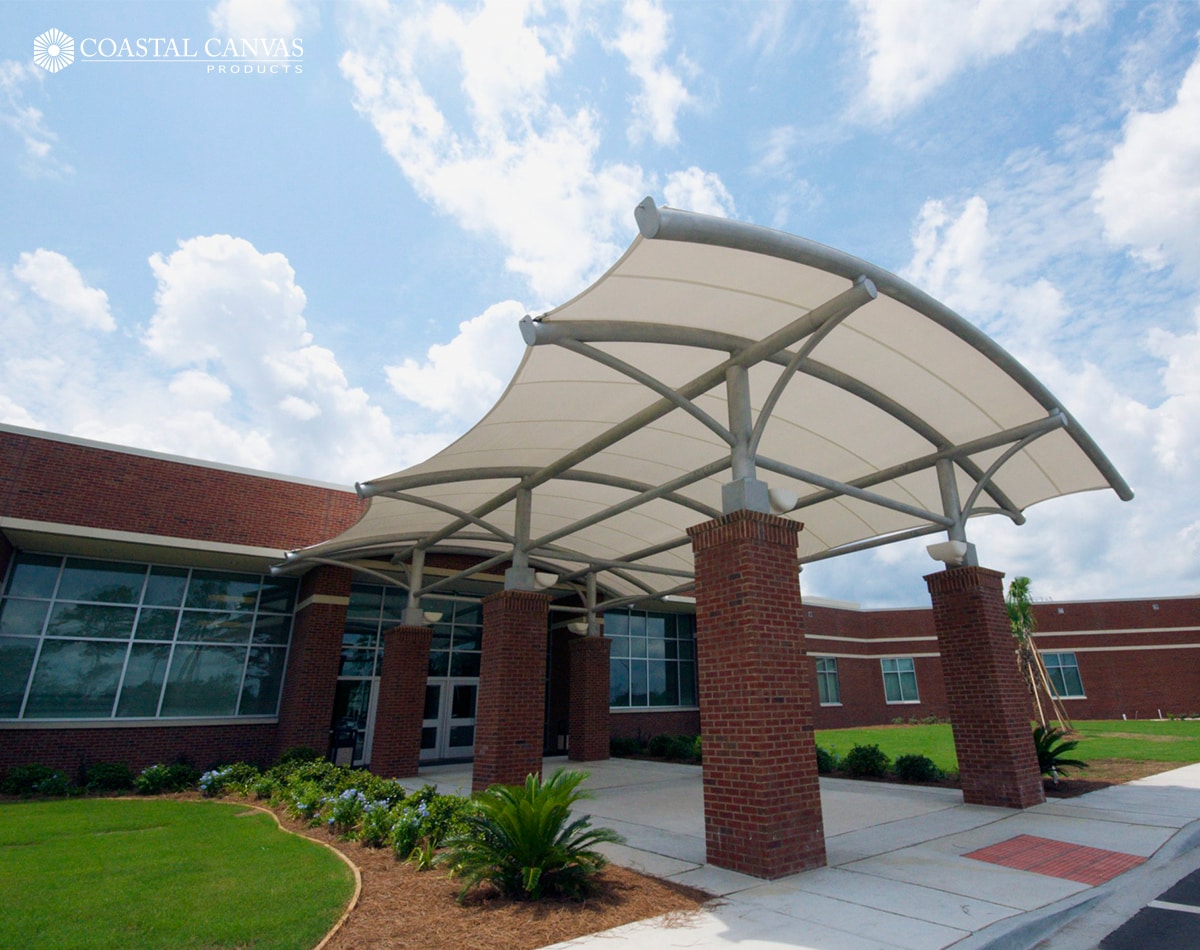
Installation
Finally, with all your custom components fabricated to specs, you’re ready to install your tension structures.
If every previous step - design, engineering and manufacturing - has been professionally executed, and if you are working with professional installers, installation should not take long. Smaller structures may only take a matter of weeks.
The most efficient projects are those that use the same partner for every step in the process. A company that can design, engineer, manufacture and install your tension structures will get you to the finish line faster as they manage quality control and ensure everything goes smoothly.
Coastal Canvas: Start-to-Finish Tension Structures
If you’re looking for a contractor to take you through this process and you have no idea where to start, give us a call. Coastal Canvas frequently works with property owners like you.
But we also partner with designers, architects and general contractors - any professional you trust to help you bring your vision to life. We’re happy to focus on fabricating the materials and acting as consultants on your project.
Whatever your level of expertise, if you have your sights set on a tension structure, we want to hear from you! We’re excited to be of service in making your dream a reality.
Coastal Canvas serves these locations and surrounding areas:
- Savannah, GA
- Hilton Head Island, SC
- Bluffton, SC
- Palmetto Bluff
- Beaufort, SC
- Richmond Hill, GA
- St. Simon’s Island, GA








